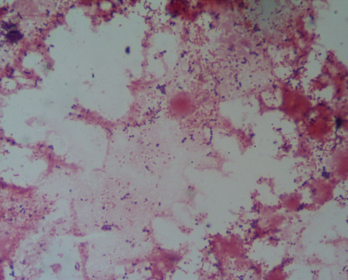CASE 70
A 27-year-old man was brought to the emergency department of a hospital with high, spiking fevers, severe diffuse pain over the lower abdomen, and loss of appetite.
LABORATORY STUDIES
Diagnostic Work-Up
Table 70-1 lists the most likely causes of illness (differential diagnosis). A presumptive diagnosis of intra-abdominal abscess may be based on persistent systemic signs (fever and elevated WBC count) and local signs and symptoms (diffuse abdominal pain). Further imaging studies are warranted to determine the location of pathology. Microbiologic diagnosis is often made by CT-guided aspiration or surgical explorations and specimen collection. Investigational approach may include
TABLE 70-1 Differential Diagnosis and Rationale for Inclusion (consideration)
Rationale: In a young adult, an intra-abdominal abscess is often due to a ruptured appendix. Preceding symptoms such as diarrhea with or without blood may suggest inflammatory bowel disease, especially if these symptoms have occurred in the past. In patients with prior abdominal surgery, complications such as abscesses may also occur.
COURSE
The patient was admitted to the hospital and an admission abdominal CT revealed a retroperitoneal abscess. He was taken to the surgery unit, where at surgery 300 mL of purulent peritoneal fluid was drained. Blood cultures were negative. Anaerobic cultures yielded a significant pathogen. Facultative anaerobic cultures were positive for three different Gram-negative species of the Enterobacteriaceae family.
MICROBIOLOGIC PROPERTIES
B. fragilis is a Gram-negative, nonspore-forming rod (Fig. 70-1) that constitutes 1% to 2% of the normal flora of the gastrointestinal tract of humans. Table 70-2 lists an array of nonspore-forming anaerobic organisms and the diseases they cause. B. fragilis is an anaerobe that exhibits O2 sensitivity in laboratory cultures (although in vivo the organisms are somewhat aerotolerant); O2-sensitive colonies on selective culture media are identified biochemically and by examination of short chain fatty acid production with the aid of gas-liquid chromatography. A thick (polysaccharide) capsule is found at the outermost layer of the bacteria (see Fig. 70-1). Lipopolysaccharide (LPS) associated with the Gram-negative cell wall is not toxic (unlike LPS of other Gram-negative bacteria, such as Fusobacterium); this is because the lipid A component of B. fragilis LPS lacks phosphate groups on the glucosamine residues, and the number of fatty acid chains linked to the amino sugars is, therefore, reduced.
Stay updated, free articles. Join our Telegram channel

Full access? Get Clinical Tree



